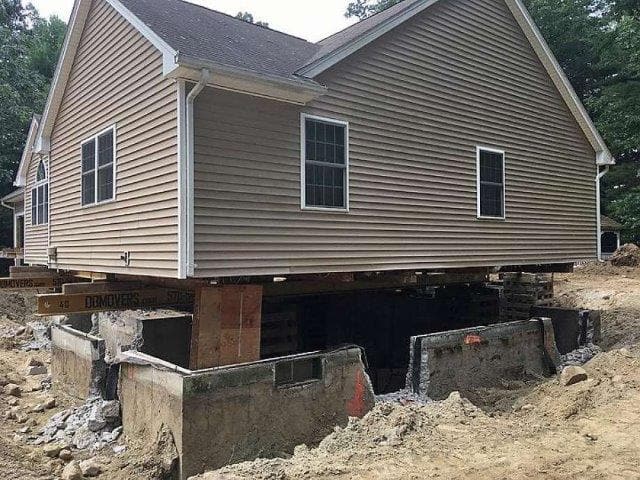The Buzz on Best Basement Waterproofing
The Buzz on Best Basement Waterproofing
Blog Article
9 Easy Facts About Best Basement Waterproofing Explained
Table of ContentsMore About Best Basement Waterproofing4 Simple Techniques For Best Basement WaterproofingNot known Details About Best Basement Waterproofing Best Basement Waterproofing Things To Know Before You BuyThe Of Best Basement Waterproofing
uses excavation methods towards the base of the framework's foundation. includes eliminating wetness after it has actually gone into the cellar. AdvantaClean's experienced experts and specialists will certainly find the water source. If wall or piece splits exist, we will inject polyurethane and epoxies into the cracks and seal the compromise, preventing further moisture from going into.If there's condensation on the outside of the aluminum foil, you have high moisture in your basement. Repair it with a portable area dehumidifier or a whole-house humidifier system rather than waterproofing products. If the aluminum foil has condensation on the inside surface area (following to the wall), the dirt around your residence may be naturally damp from a high water table or bad dirt water drainage.
You can waterproof just your indoor walls, which may resolve the trouble. Once they dry, they adhere permanently to concrete and stonework walls.
The Main Principles Of Best Basement Waterproofing
Swirl the brush at the last of application to provide the wall surface an attractive, completed look. Concrete waterproof finishings can not be used to previously repainted surface areas; inspect the label. A 5-gallon pail expenses regarding $60. Understood as densifiers, they are appropriate only for walls that haven't been painted or sealed.
You clean, roll, or spray it on much even more thickly one gallon covers simply 75 square feet, not the 300 square feet normal with conventional paint. Water-proof paint is great for DIY application. You can apply it over painted surfaces, and paint over it once it's healed (one gallon prices $37).
It can cost $10,000 to $15,000, depending on the job needed. Exterior waterproofing involves excavating throughout your home to the full depth of the structure walls, after that installing a waterproof coating or membrane layer topped by water drainage panels. The panels provide helpful resources a very easy course for water to flow to an exterior French drainpipe at the base of your foundation.
A basement without waterproofing is kind of like that. Your cellar doesn't desire to go through a rainstorm without appropriate protection just as much as you don't want to.
All About Best Basement Waterproofing
Yet if you have actually done your research, you would certainly know there are two sorts of waterproofing: inside and exterior. It can get confusing what they both mean, which one's a better financial investment, and what will in fact keep the water out. Do not stress, we created this blog to quickly define both methods for you and go over the benefits and drawbacks of each.
Exterior waterproofing is a waterproofing technique that includes sealing your home from the outside. The structure walls are after that cleaned, sealed, and covered with a water-proof membrane layer or sealant.

Best Basement Waterproofing Things To Know Before You Get This
It's a more involved process that needs excavating up your yard, which is costly and time-consuming. Exterior waterproofing entails removing every little thing surrounding the residence, including verandas, driveways, walkways, landscape design, air conditioner devices, decks, and more. If any one of the work was done inaccurately and water is still entering your cellar, there isn't much you can do to deal with or fix it.
Inside cellar waterproofing includes waterproofing from the within. Any type of water that leaks into your basement is rerouted before it touches your flooring.
It's an effective method to water resistant your cellar - Best Basement Waterproofing. The downside of interior basement waterproofing mostly relates to the setup procedure. This approach requires saved things, furniture, and built-in shelving or closets to be relocated from touching the cellar wall surfaces. And during installment, your basement can not be made use of. The biggest difference between the two techniques is this: Exterior waterproofing is a preventative service and interior waterproofing is a this link rehabilitative solution.
Top Guidelines Of Best Basement Waterproofing
Finally, exterior and you could try this out indoor cellar waterproofing are both effective approaches of protecting your home from water damages. Exterior waterproofing creates an obstacle that prevents water from entering your home, while interior waterproofing reroutes water that does enter your home. And it is very important to note that outside waterproofing is an expensive and turbulent installation procedure when compared to indoor waterproofing.
Whichever technique you pick, make certain you pick a trusted and reliable service provider for the task. If you have any questions concerning cellar waterproofing, please reach out to us.
You can submit our kind below, begin a conversation in the bottom right-hand edge, or call us at 1-800-827-0702.
Report this page